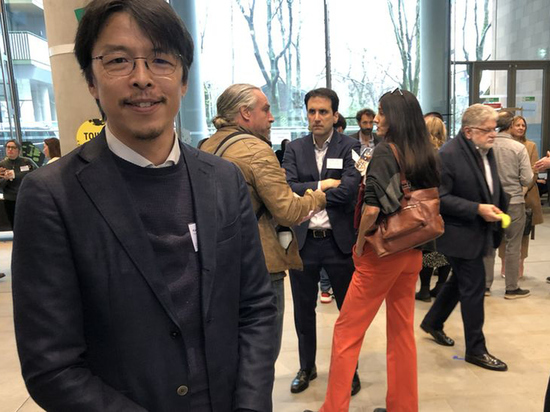Biologists have made a coup, having received offspring from two male mice
[ad_1]

A unique experiment by Japanese molecular biologists will help women with infertility
For the first time in the world, Japanese scientists received offspring from two biological … fathers. The female reproductive organ is the ovary, and then they obtained oocyte cells from male skin cells, and then they were fertilized with ordinary sperm. The achievement – coincidentally – was announced on March 8 at the Third International Human Genome Editing Summit at the Francis Crick Institute in London. The correspondent of “MK” understood the technology together with Sergey Kiselev, Doctor of Biological Sciences, Professor and Head of the Laboratory of Epigenetics at the N.I. Vavilov Institute of General Genetics of the Russian Academy of Sciences.
I want to immediately reassure those who decided to connect this technology with the problem of childlessness in same-sex marriages, including the representative of the United States, who pedaled this topic before the speech of the Japanese. Manipulations with stem cells and the creation of tissues of various organs on their basis have been going on for a long time. For the last 10 years, molecular biologists have been working primarily on solving the problems of childlessness in ordinary marriages, between a man and a woman.
“Last year, Kyushu University professor Katsuhiko Hayashi created a special structure from the stem cells of a female mouse in a test tube, which in its properties was similar to an ovary. They, according to the developers of the technology, can replace a defective reproductive organ. Inside the resulting formation, which, to be more precise, is called an organoid, viable eggs can develop, says Sergey Kiselev. “Now Hayashi, who spoke at the summit, announced that he had turned reprogrammed male mouse stem cells into a similar organoid, grown eggs in it, and even had offspring – seven healthy mice.
– How could it be possible to create, in fact, a female organ from male cells?
“First, Hayashi’s group created reprogrammed cells from male skin cells (they were called iPS). Then the male Y-chromosome was removed from these cells, and then the second X-chromosome was introduced, that is, in fact, these cells were artificially made female.
Help “MK”. Reprogrammed (or induced) stem cells are cells obtained from some other cells (for example, from skin cells) by epigenetic reprogramming. Previously, multifunctional stem cells that could be programmed to develop any organ could only be obtained from an embryo. This posed ethical barriers for scientists. However, in 2006, Shinya Yamanaka, a professor at the Japanese University of Kyoto, was able to obtain stem cells from adult skin cells for the first time.
Then it remained only with the help of epigenetic methods (for example, by introducing them into a special nutrient medium) to direct the development of iPS cells to the formation of an ovary. This organoid was grown in a Petri dish. And then, when eggs were formed in it, they were fertilized with ordinary sperm. As a result, scientists received about 600 embryos, which were implanted in surrogate mothers.
– That is, it still could not do without females … What was the most difficult thing in this experiment?
– The most difficult thing, and Katsuhiko Hayashi emphasized this, here was to get “female” cells from male ones, replacing the Y chromosome with a second X chromosome. Well, after growing from such ovary cells and the formation of eggs, things went according to the usual IVF procedure (in vitro fertilization).
– If only seven mice were born out of 600 embryos, then the effectiveness of the method is not very high …
– Yes, it turned out about 1% against 5%, born during IVF from normal eggs. But it must be taken into account that these are the first attempts to obtain embryos from conditionally same-sex parents (because here, in any case, it could not have done without the material of females). The main goal of this project was to study the possibility of treating the infertility of women who have only one X chromosome, and not two (the so-called Turner syndrome), which leads to infertility.
According to the author of the work, Katsuhiko Hayashi, seven mice were born subsequently gave their healthy offspring, which inspired scientists to continue the experiment with human cells. In order to become technically possible to create a viable human egg from a male human skin cell, it will take 10 to 20 years.
[ad_2]
Source link








